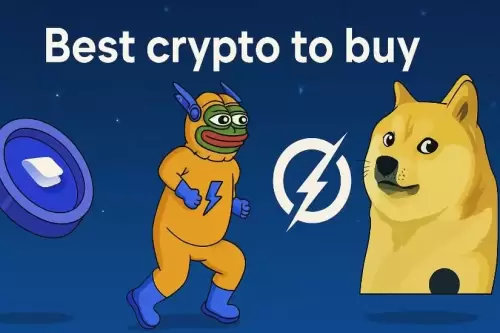 |
|
 |
|
 |
|
 |
|
 |
|
 |
|
 |
|
 |
|
 |
|
 |
|
 |
|
 |
|
 |
|
 |
|
 |
|
Corporate treasurers are traditionally cautious, allocating the majority of capital to low-risk assets. These are typically sovereign bonds such as US Treasury bonds.

The price of bitcoin rose sharply on Thursday, putting it back in contact with the $110,000 level, galvanized by the rush of corporate treasurers and the teasing from White House advisor Bo Hines.
The Bitcoin Strategy
Now, usually, corporate treasurers are known for their conservatism, allocating the majority of capital to less risky assets. These are typically sovereign bonds, such as US Treasury bonds.
But the world is changing. Inflation, interest rates, geopolitical risks, and the advent of bitcoin are leading more and more companies to reconsider this now sterile strategy, especially in a context where Europe joins the BRICS rebellion against the dollar.
In 2020, MicroStrategy was the first to make bitcoin its main treasury reserve with an initial purchase of 38,250 BTC for $425 million. Five years later, Strategy holds 582,000 BTC worth $63 billion.
Dozens of companies and institutional investors, including Stone Ridge, Semler Scientific, and Tesla, have adopted similar strategies: more than a hundred of them now hold over 3% of the circulating bitcoin supply, as shown by Fidelity Digital Assets’ study on corporate treasuries.
Bernstein Research expects the corporate world to invest $330 billion by 2029. To put this figure in perspective, note that ETFs have “only” attracted $45 billion since their launch in January 2024.
It’s straightforward, the pace at which companies are accumulating already exceeds the natural supply of bitcoins (450 BTC per day). Not to mention ETF demand which is of the same order of magnitude (431 BTC as of Tuesday, June 10).
Undoubtedly, regulatory developments have strengthened investors’ confidence. Notably the accounting legitimacy offered by the Financial Accounting Standards Board (FASB), the MiCA regulation in Europe, and the SEC approval of ETFs in the United States.
All these advances provide investors and companies with the assurance and clarity they needed to take the plunge.
Born in USA
Of course, the big catalyst of 2025 was Donald Trump’s election. The United States is about to make bitcoin its reserve currency and the latest statements from Bo Hines are feeding into the prevailing optimism:
Reporters constantly ask me how many bitcoins we are going to accumulate? We want as many as possible. We have to do so in a budget-neutral way, but the possibilities are countless. […] We will be ready soon and I think bitcoiners will be extremely happy.
Moreover, there are signs that speak for themselves. Trump Media and Technology Group has just raised $2.5 billion to build a bitcoin treasury. And as everyone knows, there is no better trader than an American politician…
Let us also remember that Senator Cynthia Lummis introduced the “Bitcoin Act” early March. This bill proposes that the United States acquire 1 million bitcoins over five years, probably by selling part of its gold reserves. The senator sees this as a geopolitical and economic strategy aimed at countering China and reducing debt weight.
Other countries will inevitably follow the United States’ lead. For example, South Korea, the Czech Republic, and also Poland. It is also rumored that Russia and China are seriously considering the matter, as they represent nearly 30% of the network’s computing power.
The Wind Also Turns in Favor of Banks
2025 promises to be a pivotal year and the evolution of bankers’ opinions may be just as significant as Donald Trump’s election.
Thanks must be given to Michael Saylor, who reassures them by rejecting the idea that bitcoin could replace the fiat system. He clarified his thoughts during the recent Bitcoin conference in Vegas:
For the CEO of Strategy, bitcoin will grow to $10 trillion, then $100 trillion, adding to existing capital without changing the world’s face.
States, companies, and municipalities will continue to issue debt as long as they exist. Families will continue to borrow to buy a home. Credit won’t disappear and people will continue to operate in fiat currency, but compensations at higher levels will be in bitcoins.
His historical parallel is interesting: “Was the world built on a gold standard in the 19th century? Yes, but what circulated was the fiduciary expression of debt, not gold. Will the world be on a Bitcoin standard in the 21st century? Yes. What will circulate? All forms of credit [in fiat currency]. I don’t see a world where that disappears. I don’t see a world where it needs to disappear.”
Michael Saylor sees Bitcoin becoming the king asset toward which everything else gravitates. “The center of gravity of the 21st-century financial universe will be Bitcoin,” he said.
In short, Satoshi Nakamoto is not the anti-Christ of banks. Bitcoin is not an existential threat to the fiat system. This awareness is perhaps what was missing
Disclaimer:info@kdj.com
The information provided is not trading advice. kdj.com does not assume any responsibility for any investments made based on the information provided in this article. Cryptocurrencies are highly volatile and it is highly recommended that you invest with caution after thorough research!
If you believe that the content used on this website infringes your copyright, please contact us immediately (info@kdj.com) and we will delete it promptly.





























































